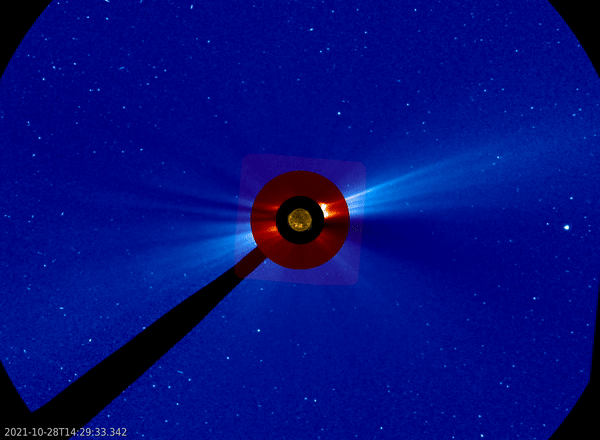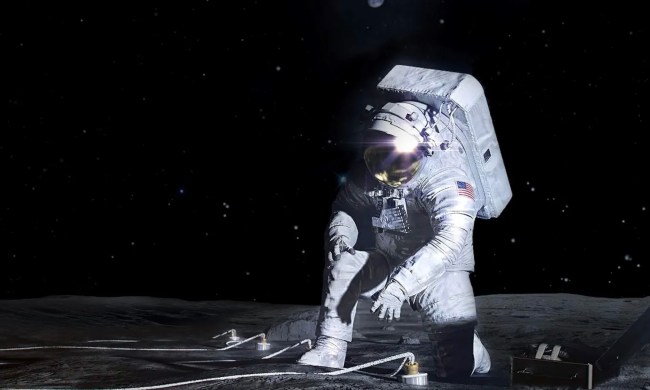When you think of the dangers of the sun, your mind most likely turns to the global threat of climate change. But the sun is active and difficult to predict, and it doesn’t just pump out a steady stream of heat and radiation — sometimes it gives off huge ejections that can have serious effects on Earth. Scientists recently reported on one such solar event that was detectable not only on Earth, but also on the moon and Mars.
The solar event, called a coronal mass ejection, occurred on October 28, 2021. A significant amount of plasma erupted from the sun’s corona, spreading out as it traveled through the solar system to the extent that it reached both Earth and Mars even when they were on opposite sides of the sun, 150 million miles apart. The event was imaged by various spacecraft including NASA and the European Space Agency (ESA)’s SOHO solar mission. To see an animation of the coronal mass ejection, you can head over the ESA’s website.

The issue with such coronal mass ejections is that they send out energetic particles that can be dangerous to both people and electronics when they reach Earth. Our planet has a magnetic field that largely protects those of us on the ground from this radiation, but it can be dangerous for those living and working in space.
It’s particularly important to understand how this radiation affects the human body as space agencies plan future crewed missions that travel far out of low-Earth orbit, such as to the moon or Mars. The radiation can also effect satellites and have an impact on communications, in a phenomenon called space weather.
In the case of the 2021 event, it was useful for researchers to see how the radiation from this solar event affected the environment on Mars, as measured by orbiting missions like the Trace Gas Orbiter (TGO) and by rovers like Curiosity. It gives information on how much protection future crews will need if they are to survive there.
“Space radiation can create a real danger to our exploration throughout the solar system,” said TGO project scientist Colin Wilson in a statement. “Measurements of high-level radiation events by robotic missions is critical to prepare for long-duration crewed missions. Thanks to data from missions like ExoMars TGO, we can prepare for how best to protect our human explorers.”
The research is published in the journal Geophysical Research Letters.



